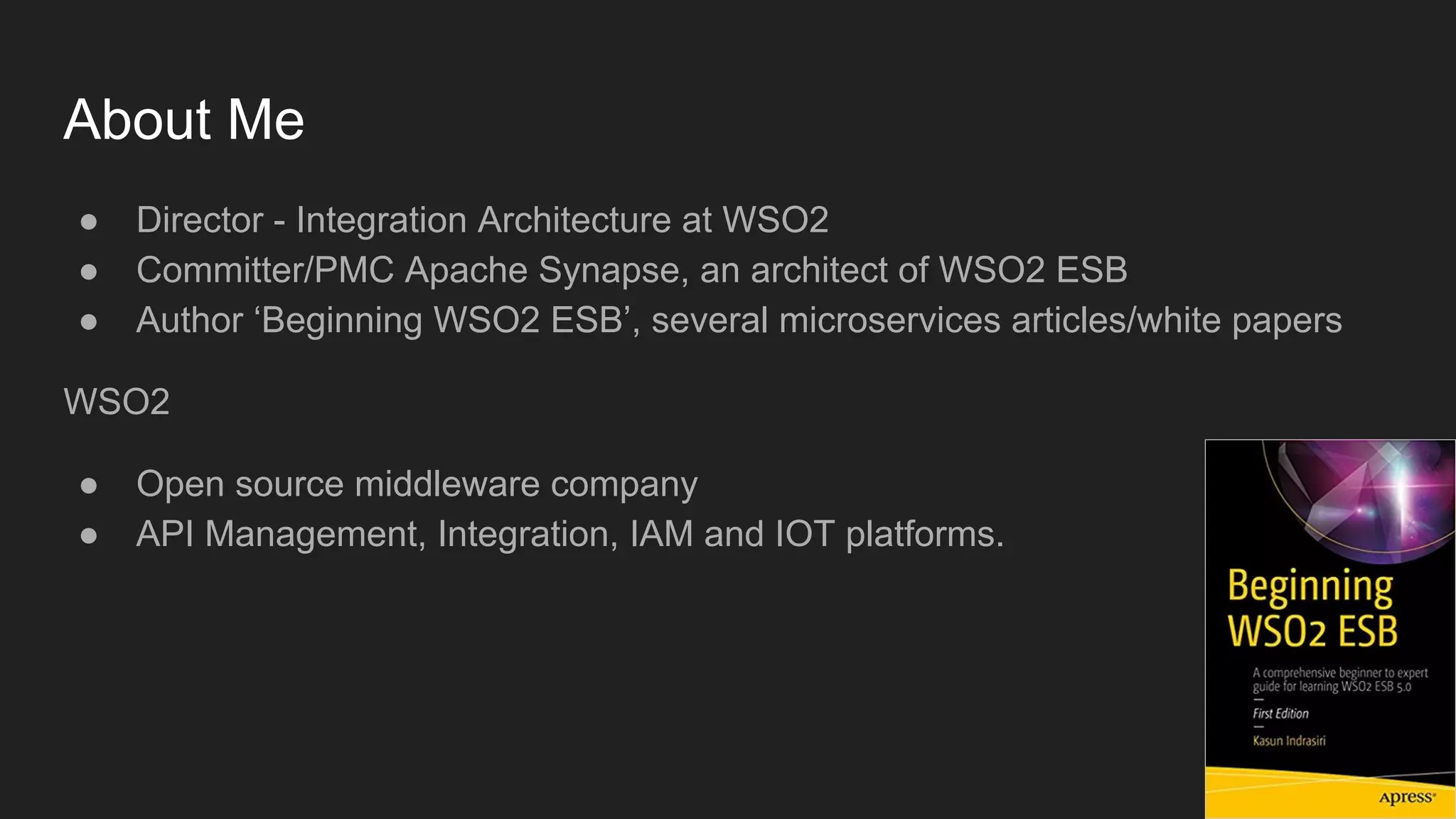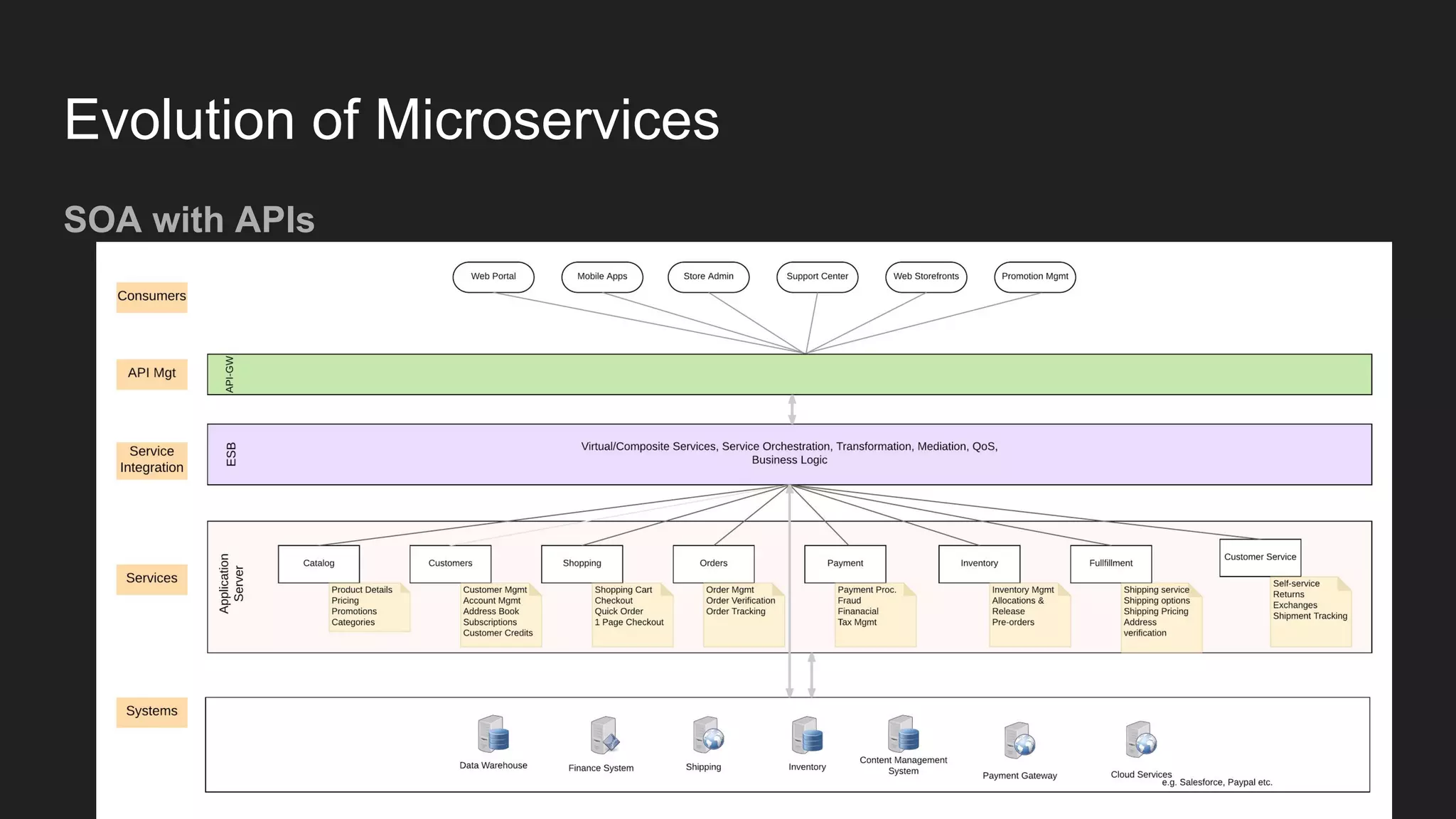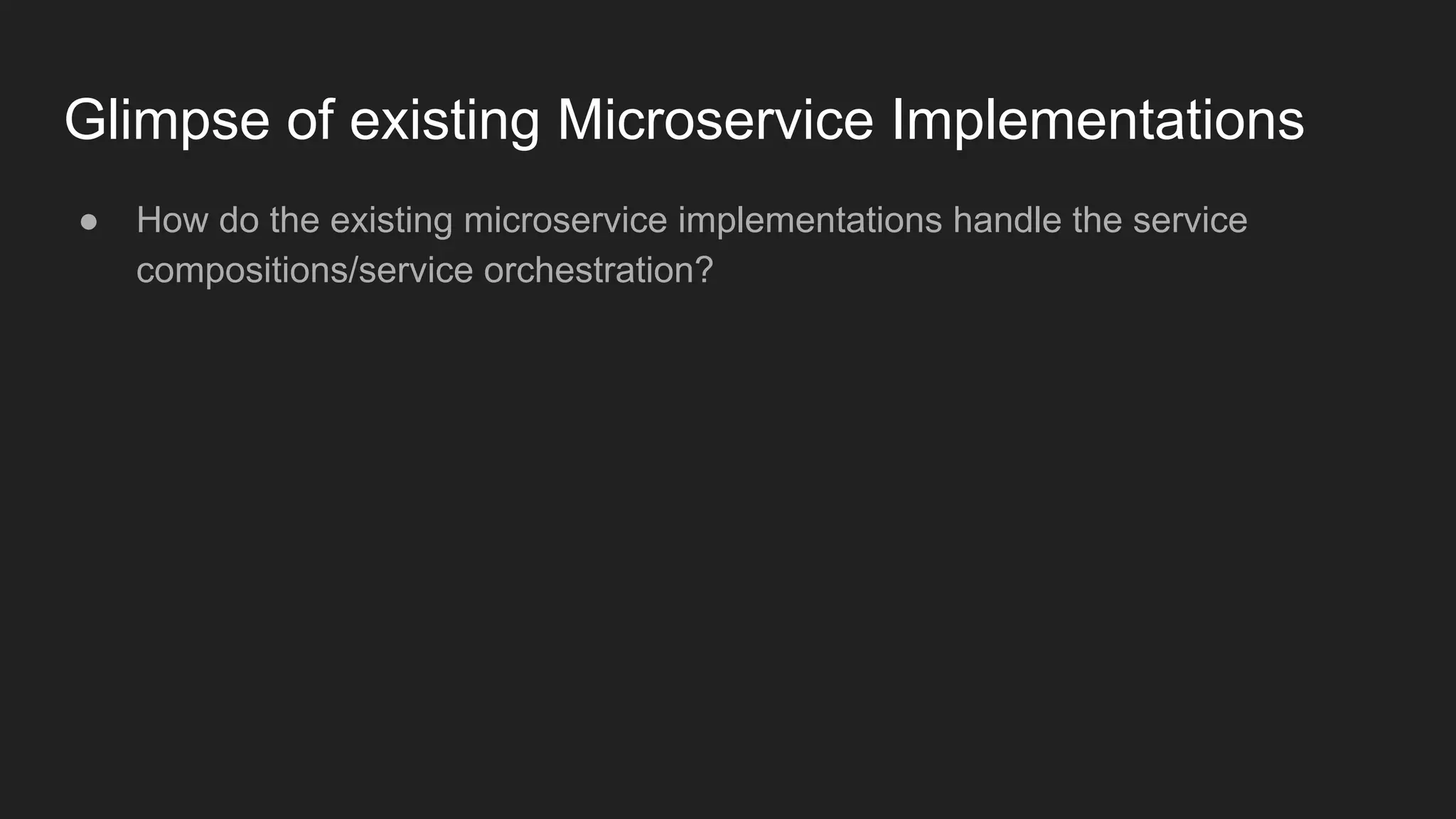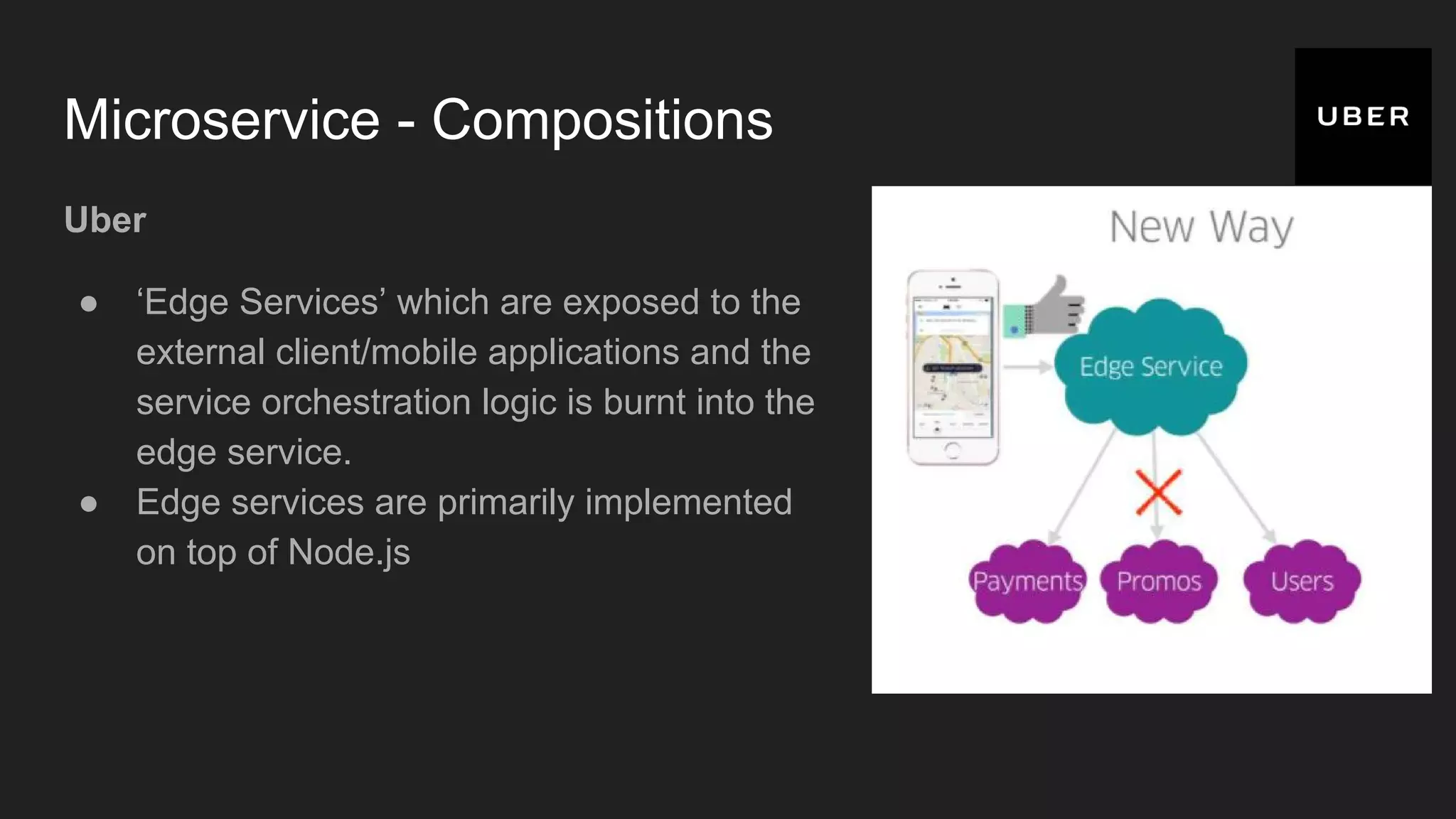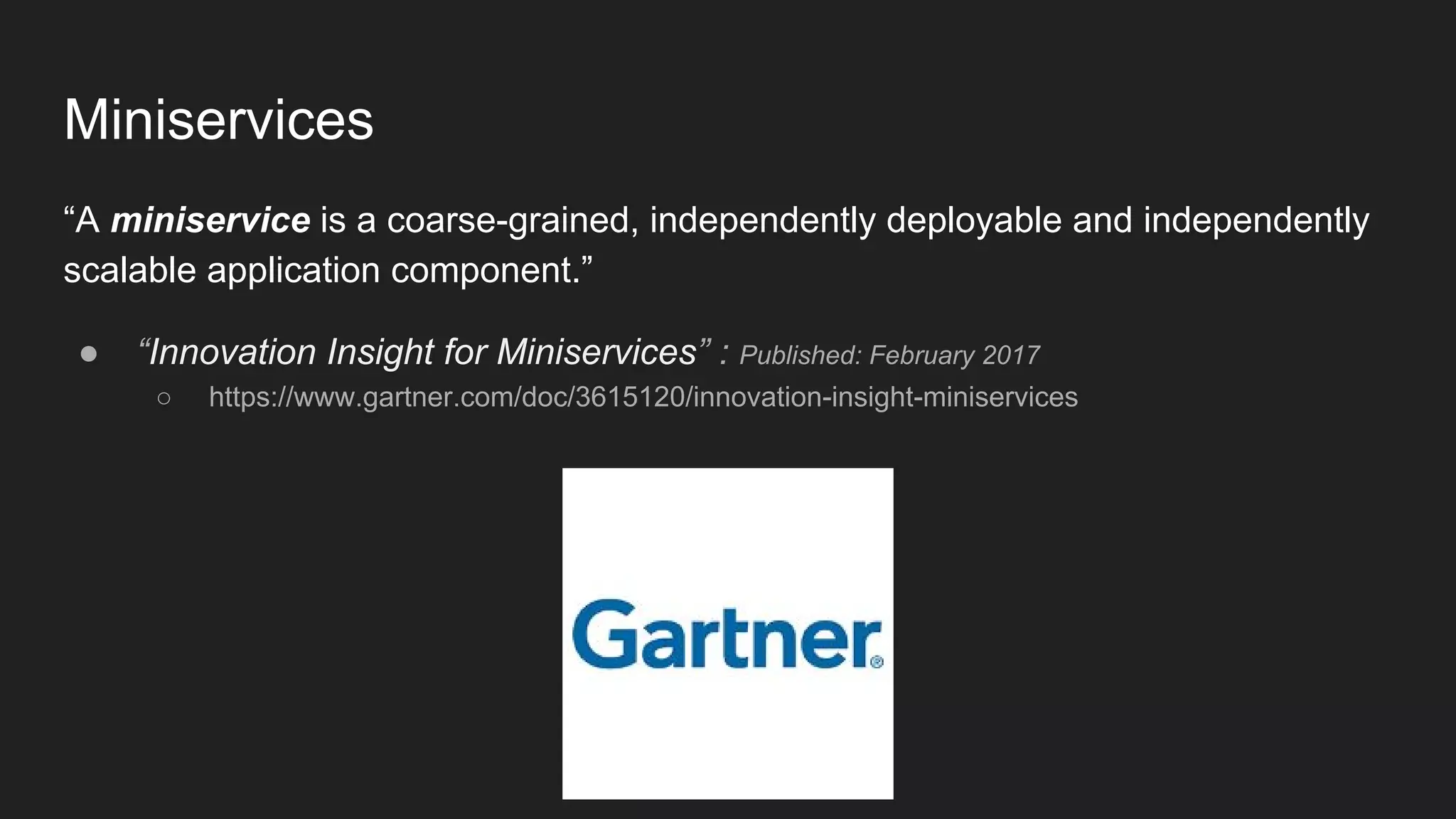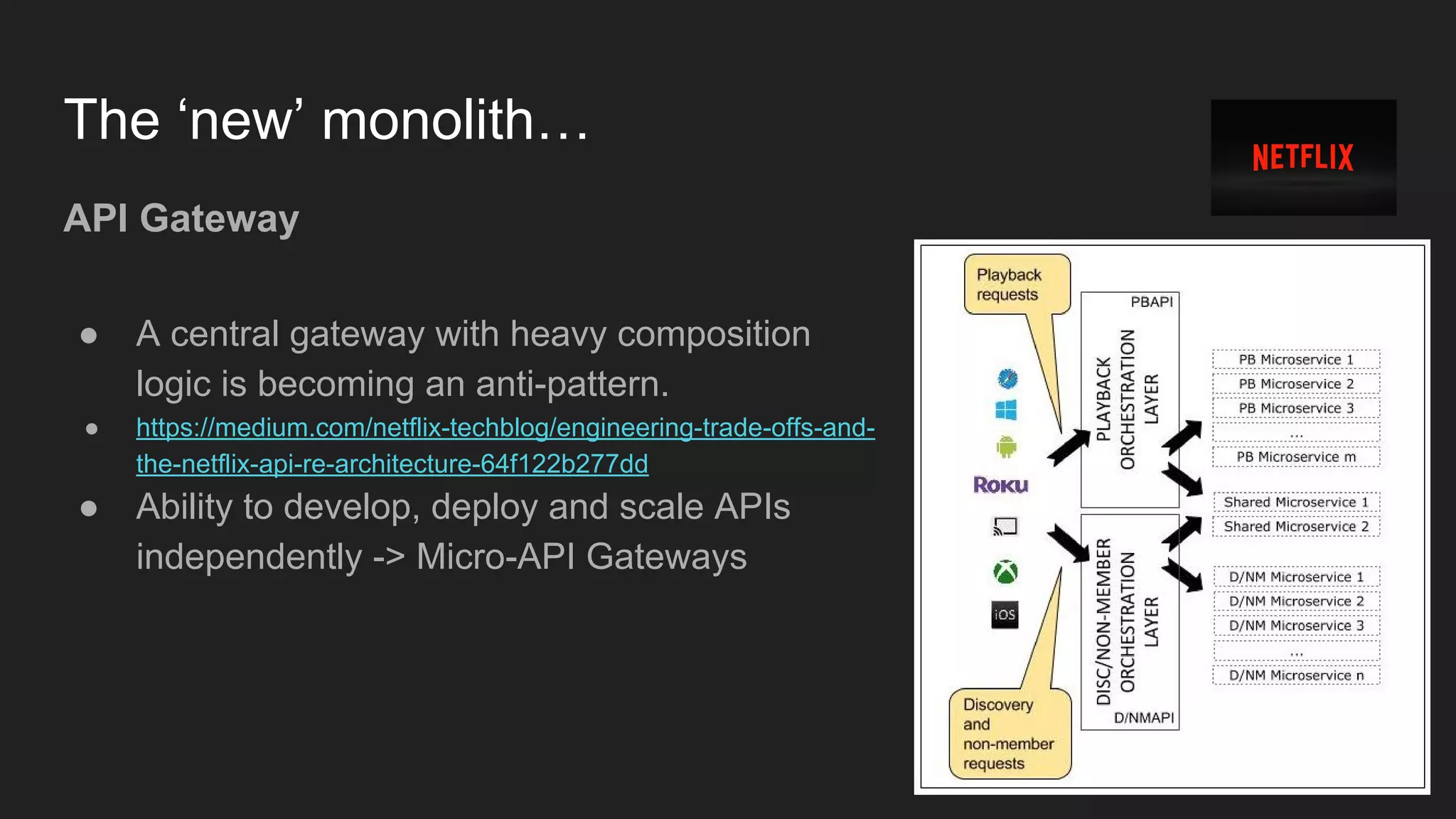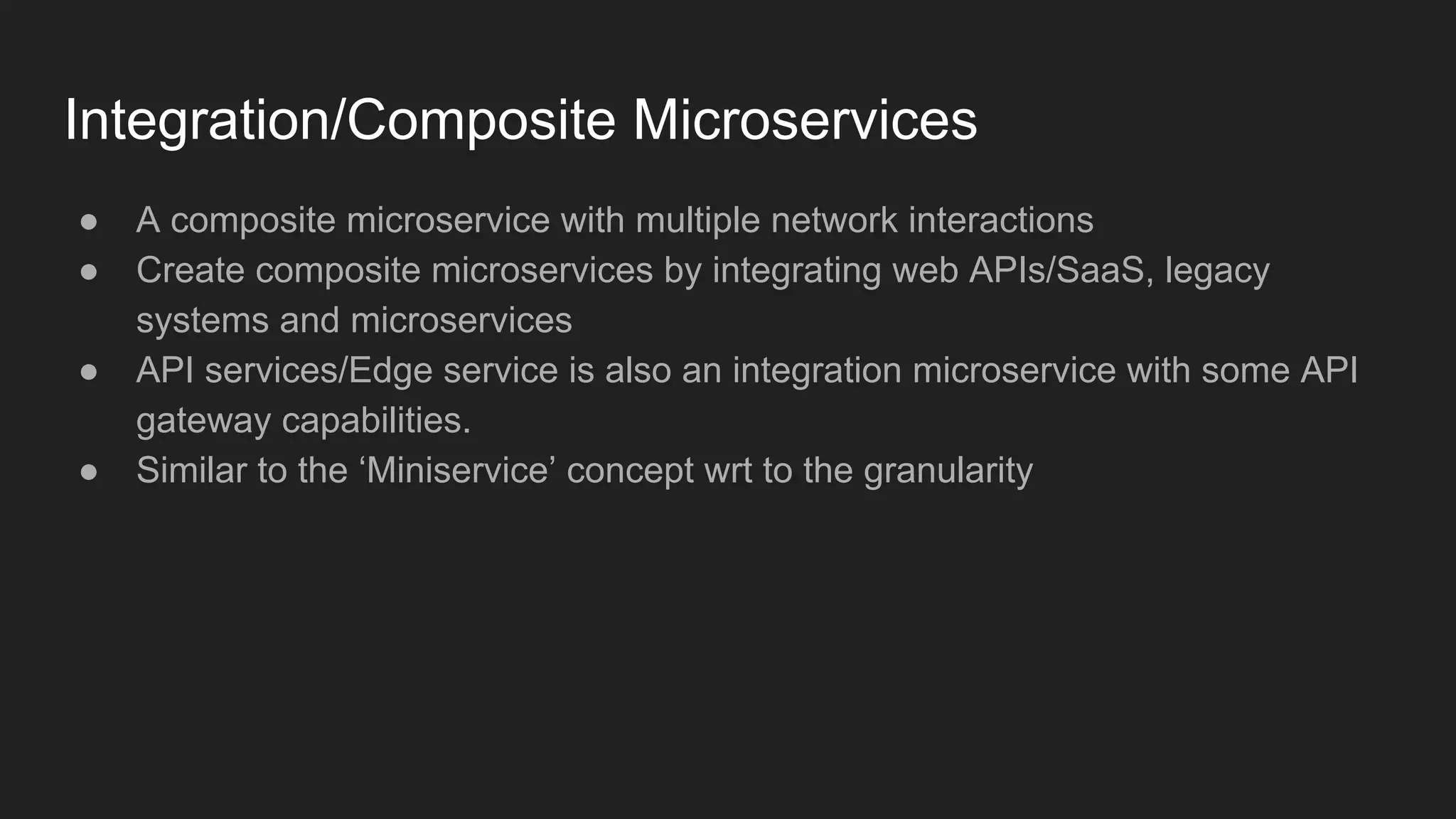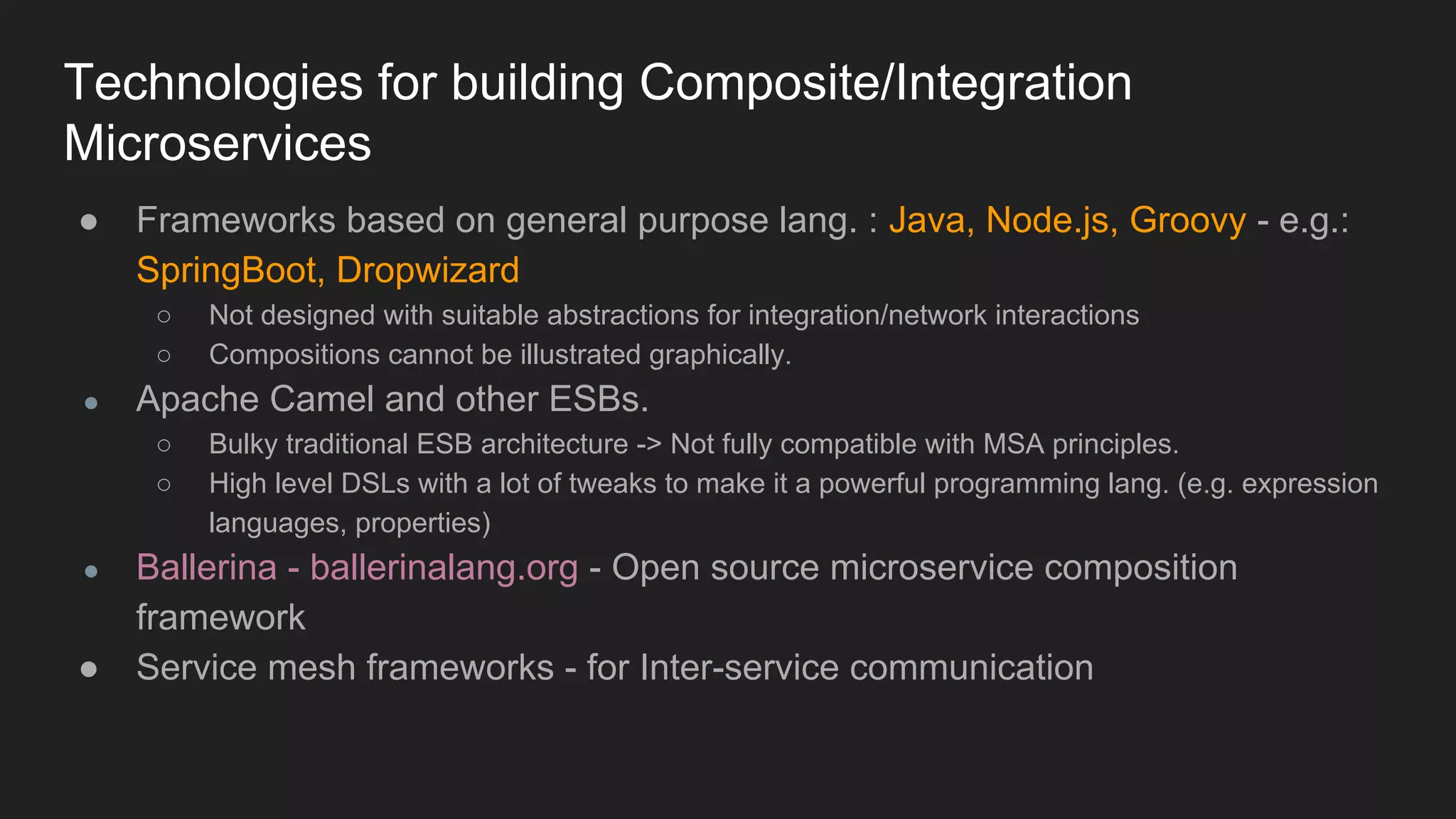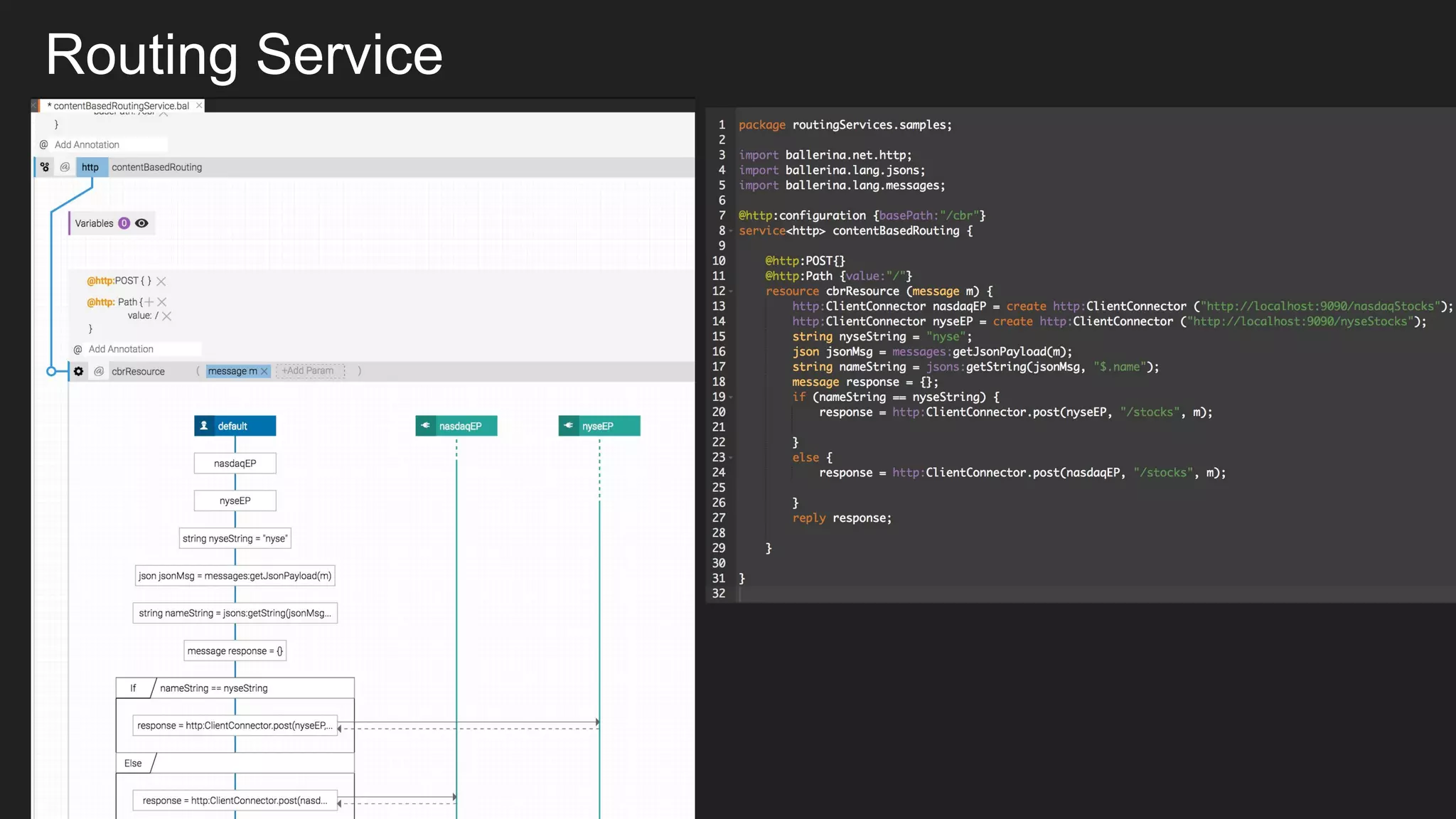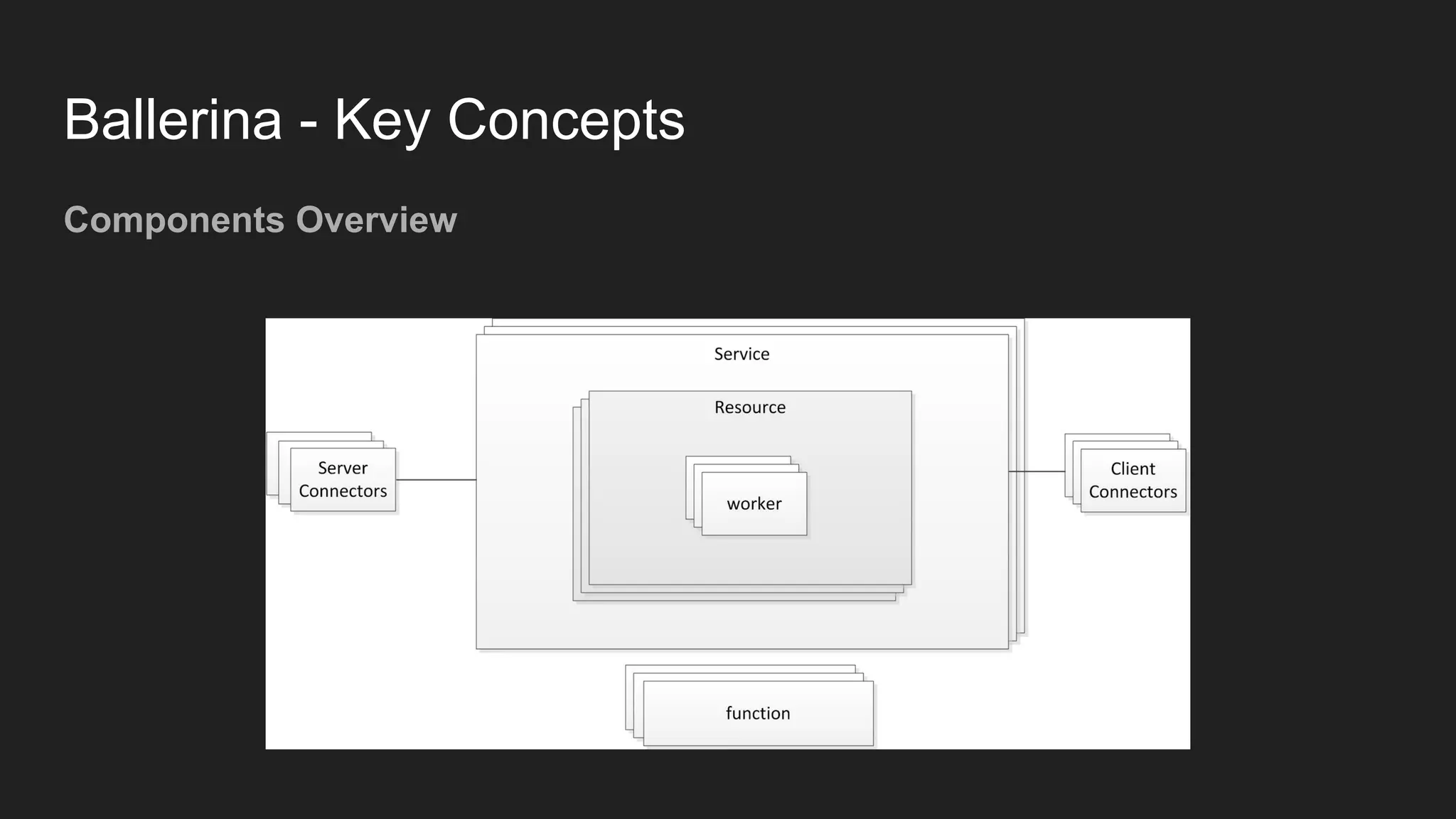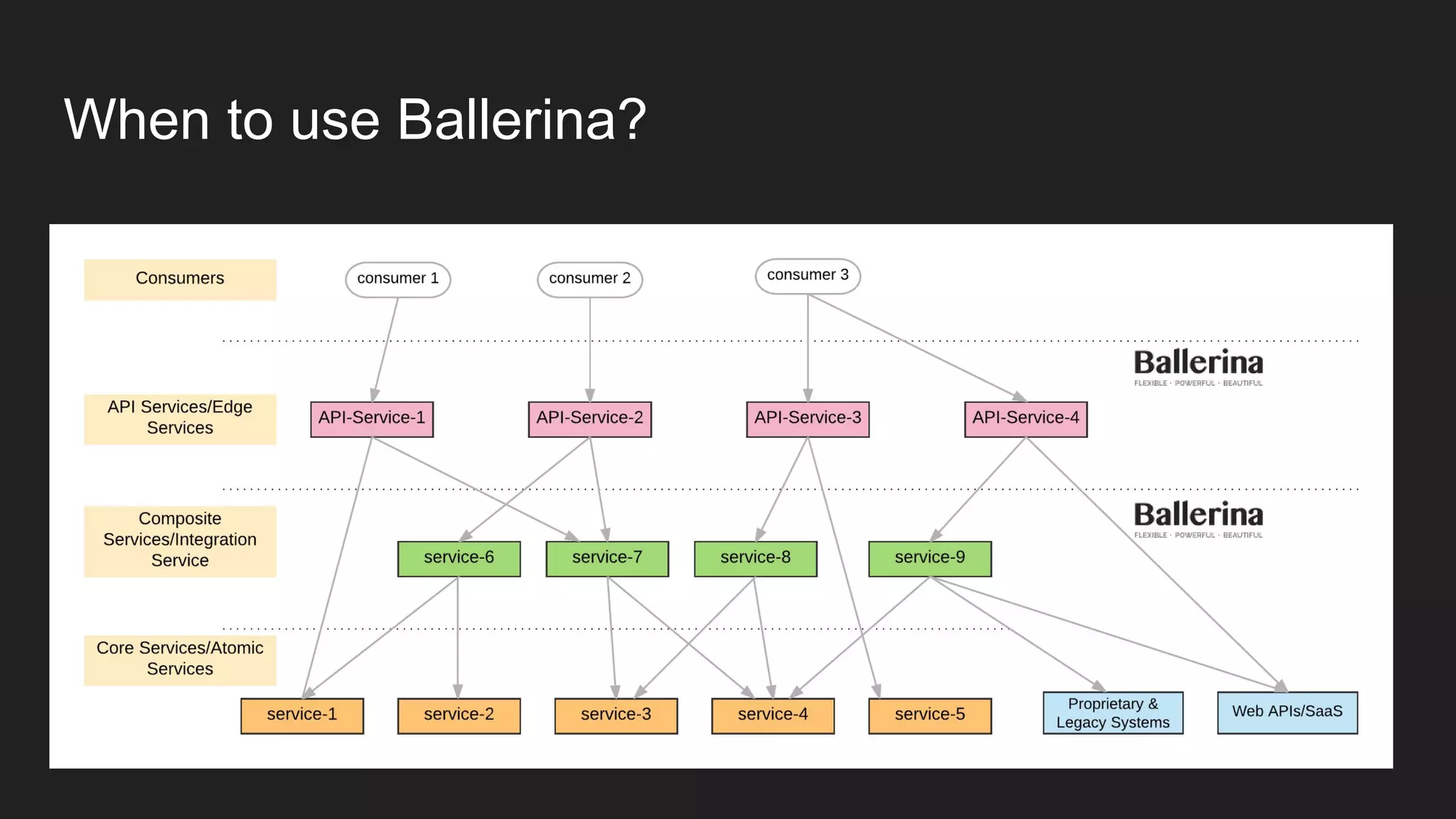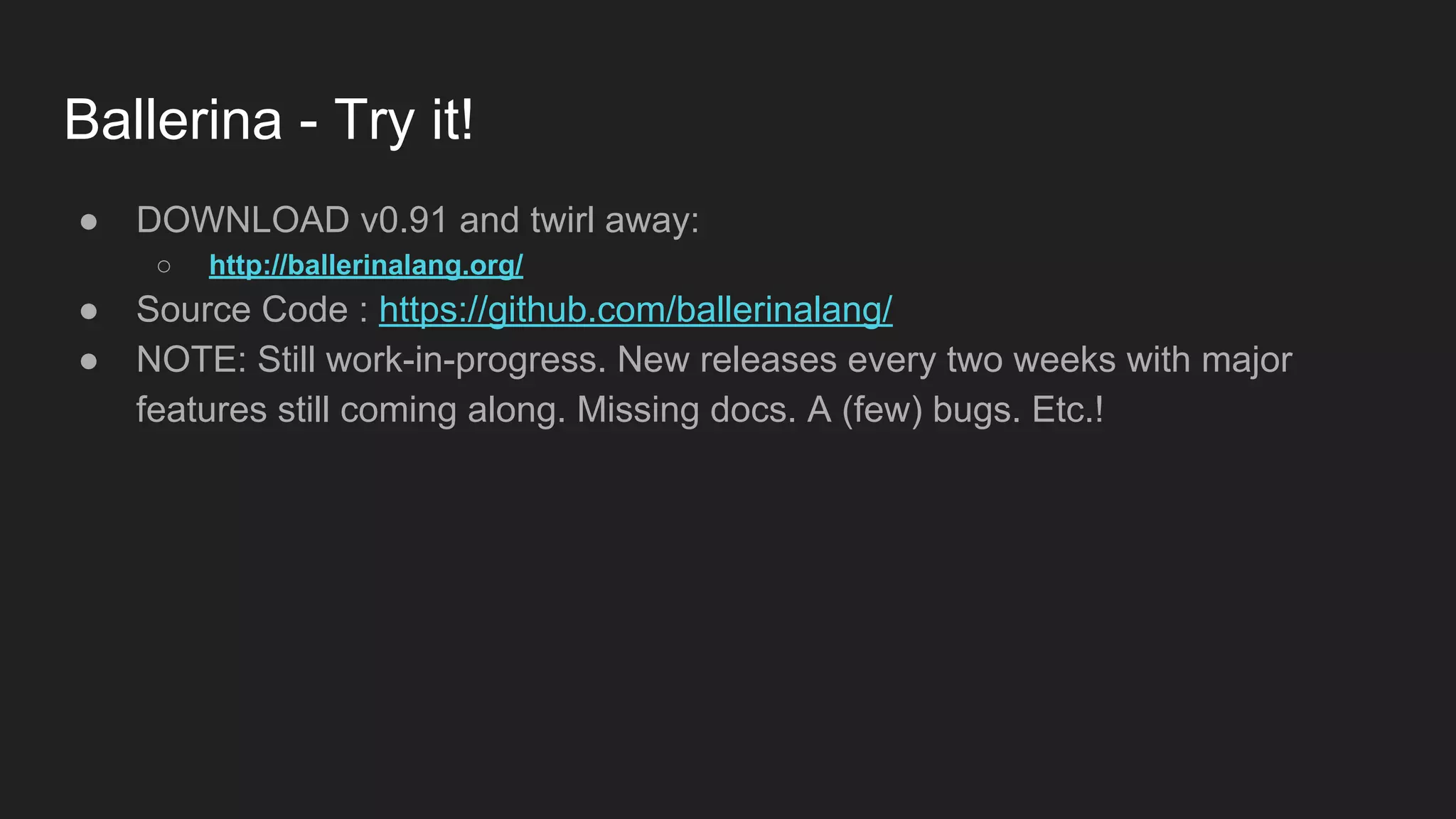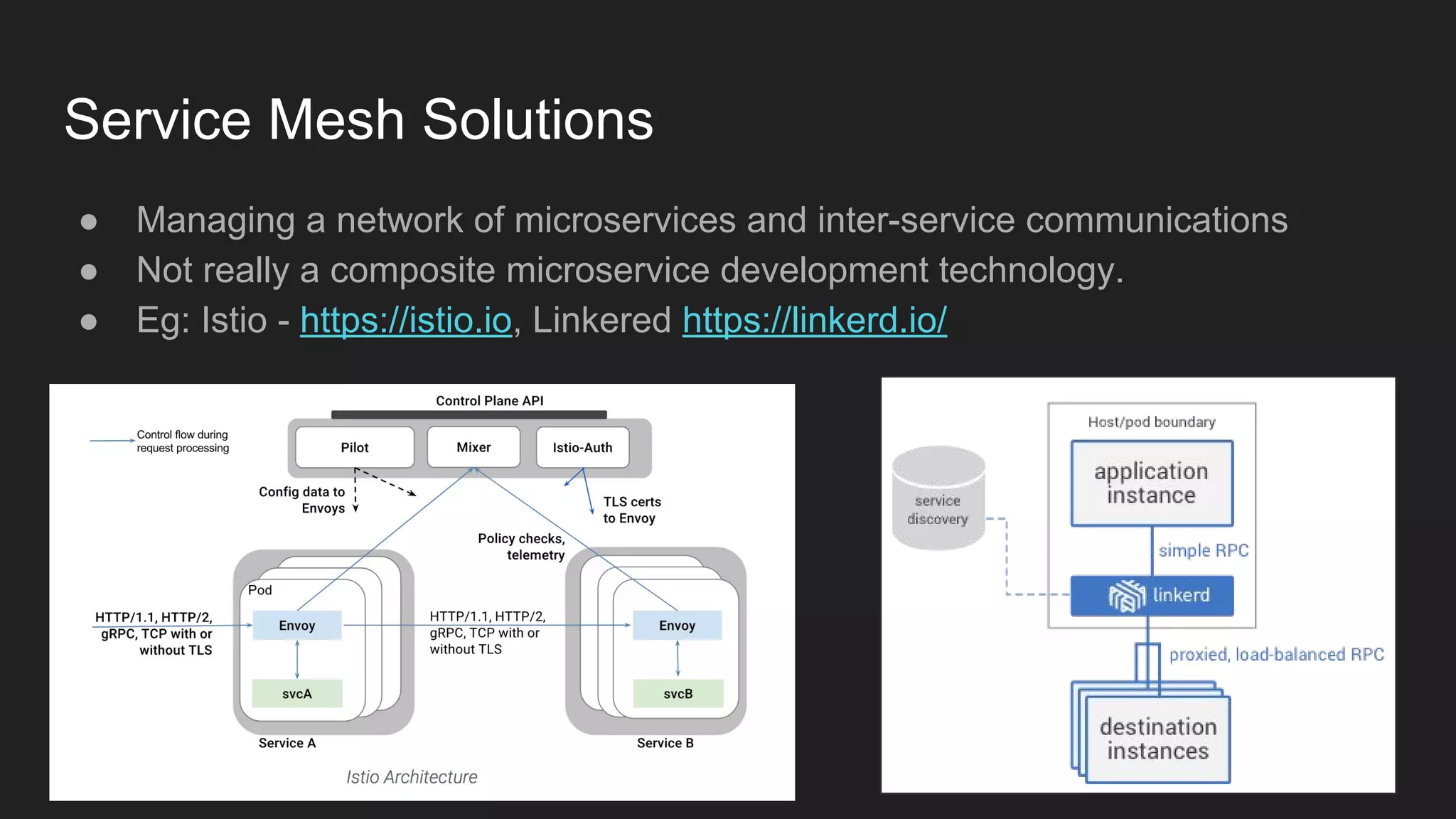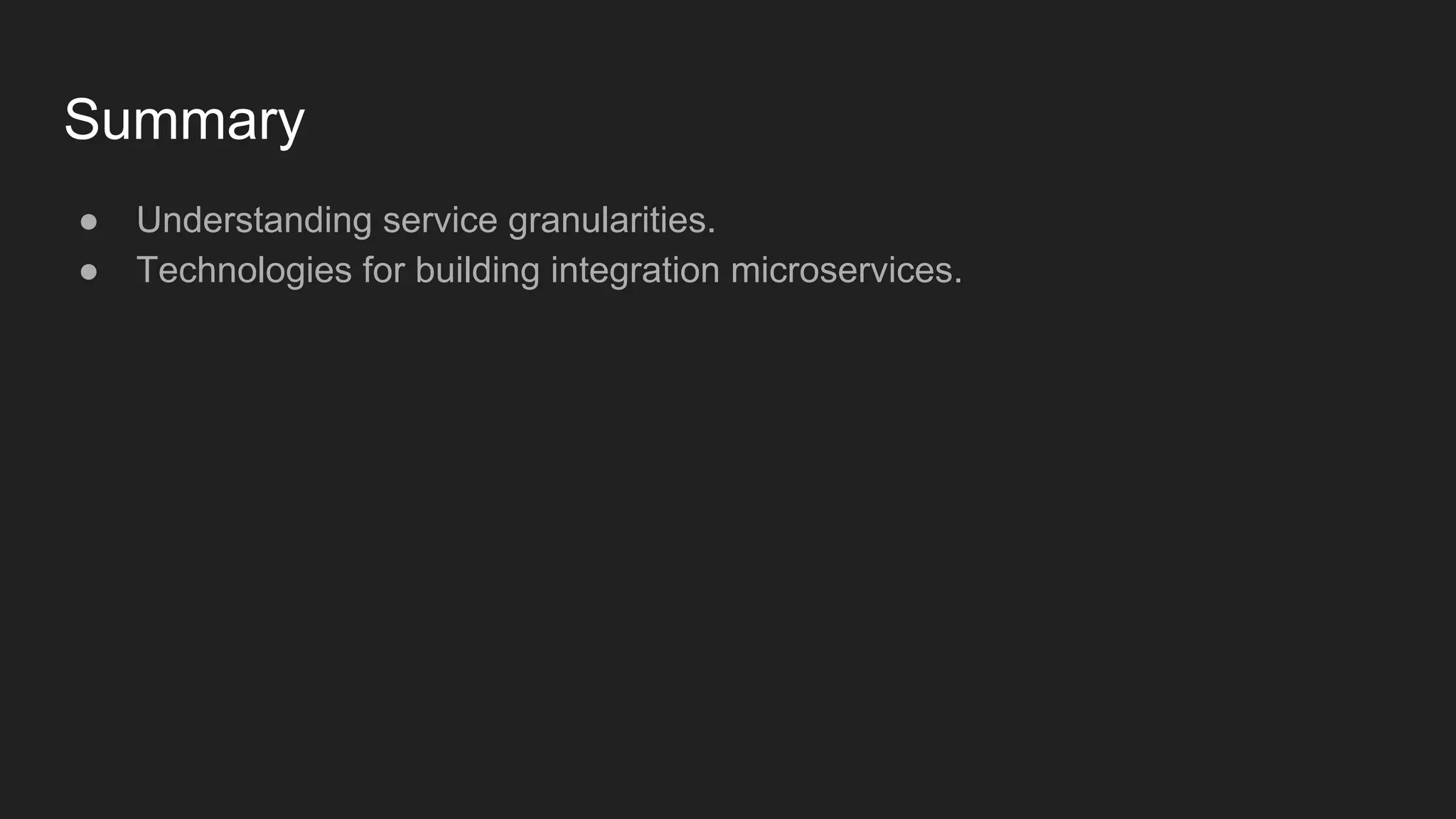Kasun Indrasiri discussed the evolution of application architectures from monolithic to microservices and the need for integration between microservices. He described how Netflix, Uber, and PayPal implement service compositions in their microservice architectures. He then introduced the concept of integration or composite microservices that are used to integrate APIs, legacy systems, databases, and other microservices. Ballerina was presented as an open source framework for building these types of integration microservices with features like graphical definitions and network abstractions. Service meshes were also briefly mentioned as tools for managing inter-service communications at scale.

